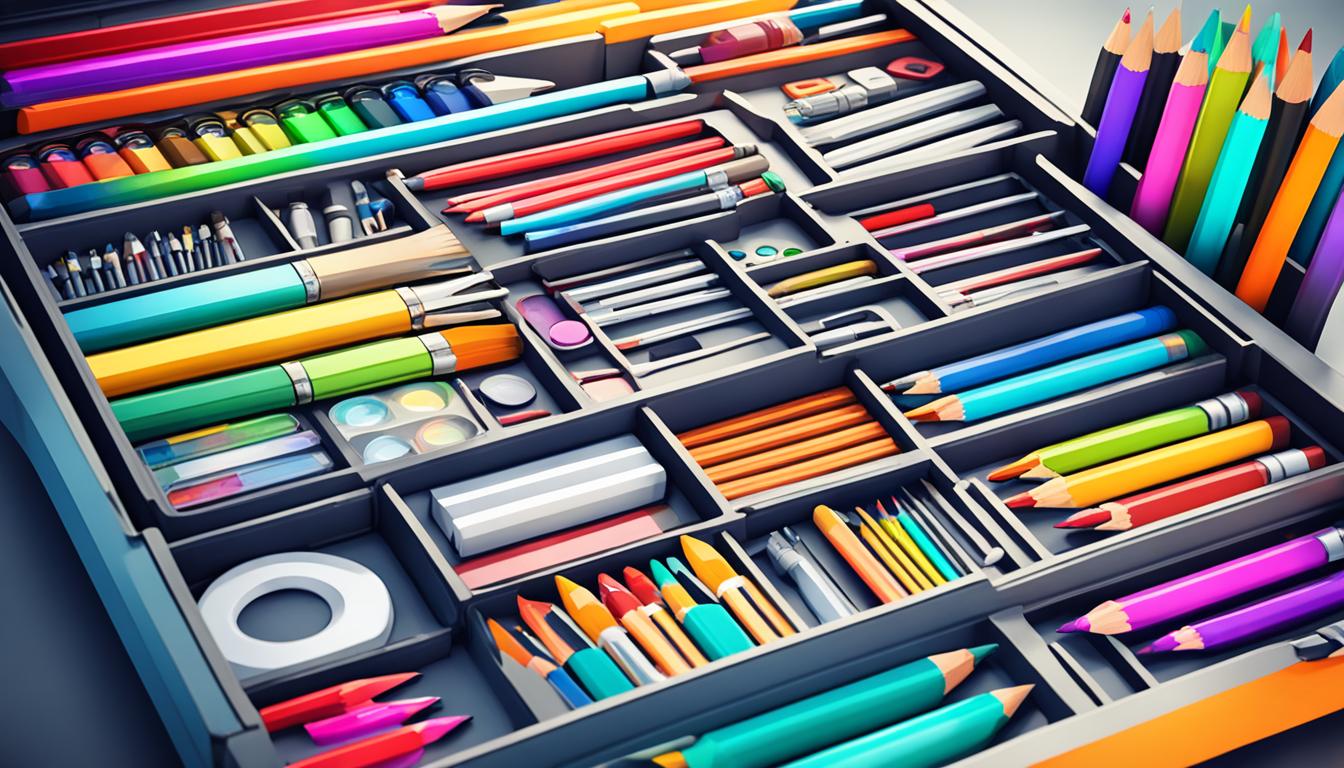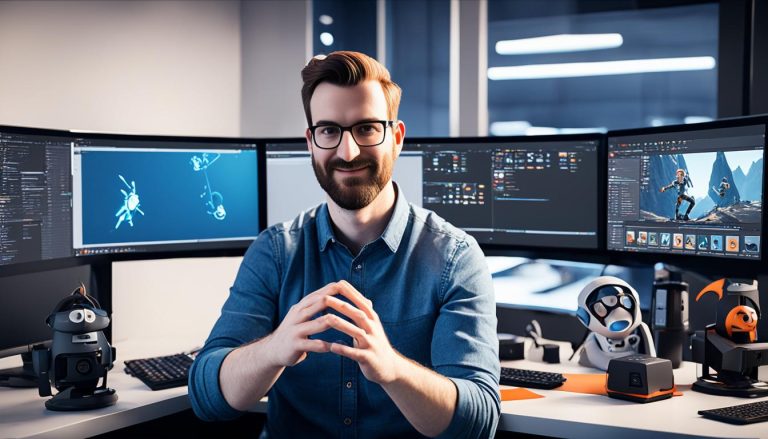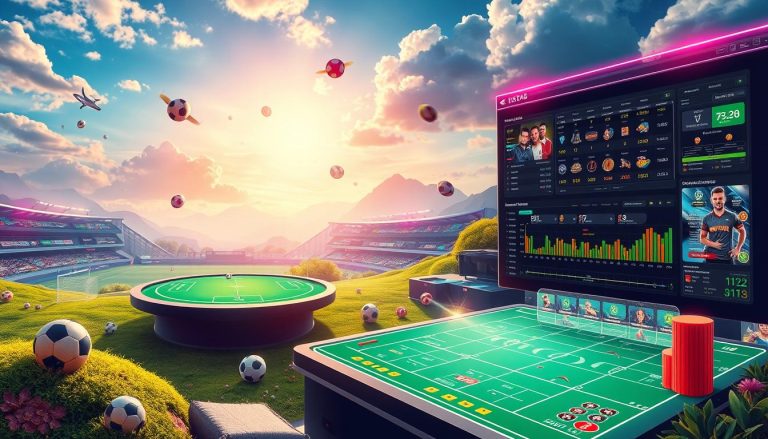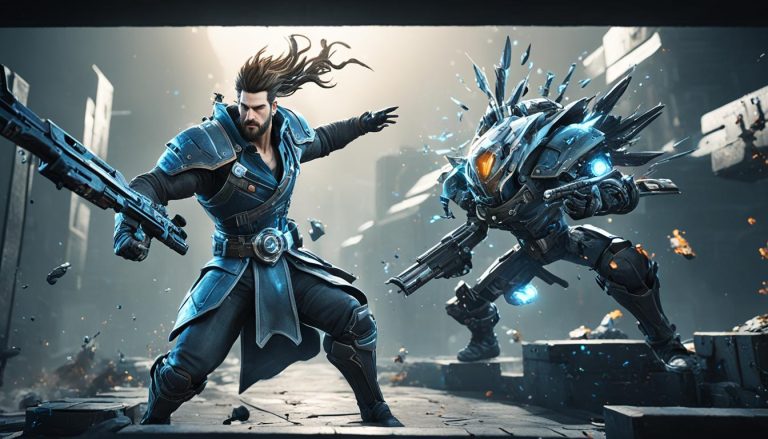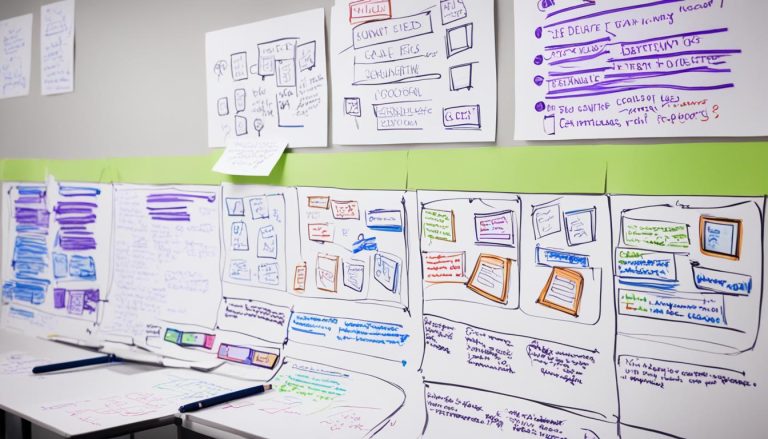Which Of These Skills Are Used In Game Design?
Welcome to the world of game design! If you’ve ever wondered what skills game design experts possess to create captivating video games, you’re in the right place. In this article, we will explore the essential skills used in game design and how they shape the immersive gaming experiences we enjoy today.
Game design is an exciting field that combines creativity, technical expertise, collaboration, and problem-solving. Game design experts are the masterminds behind the incredible worlds, characters, and gameplay mechanics that make video games so captivating.
With the rapid growth of the gaming industry, the demand for skilled game designers has skyrocketed. From AAA titles to indie gems, the contribution of game design experts is vital to the success of every game.
Throughout this article, we will dive into the various skills utilized by game design experts. We’ll cover the technical skills, such as programming and computer graphics, that bring virtual worlds to life. We’ll also explore the creative skills, including storytelling and sound design, that give games their unique artistry and immersion.
Furthermore, we’ll examine the importance of collaboration and communication skills in game design, as well as the analytical and problem-solving skills that help create engaging gameplay mechanics and level design. Finally, we’ll discuss the significance of adaptability and continuous learning in today’s rapidly evolving gaming industry.
So join us on this journey through the skills used in game design, and gain insights into the world behind the games we love. Whether you aspire to become a game design expert or are simply curious about the magic that goes into crafting video games, this article will provide you with a deeper understanding of the gaming industry.
Technical Skills in Game Design
In the world of game design, technical skills are crucial for bringing virtual experiences to life. From programming intricate game mechanics to creating stunning computer graphics, game design experts rely on a range of technical abilities to craft immersive video games that captivate players. In this section, we will explore the key technical skills that game designers possess and how they contribute to the development of complex and visually stunning games.
Programming Knowledge
One of the fundamental technical skills in game design is programming. Game designers must have a strong understanding of programming languages and code to develop gameplay mechanics, character behaviors, and interactive elements. Proficiency in programming allows designers to bring their creative visions to life and create dynamic worlds that respond to player actions and decisions.
Computer Graphics
In addition to programming, a solid grasp of computer graphics is essential for creating visually captivating video games. Game designers use computer graphics techniques to design realistic environments, characters, and visual effects. From texturing and lighting to 3D modeling and animation, mastering computer graphics enables designers to create immersive and visually stunning worlds that draw players into the gaming experience.
Game Engines
Game engines play a vital role in game design by providing a framework for building and developing games. Game designers must be familiar with popular game engines like Unity or Unreal Engine and have the technical skills to utilize their features effectively. By understanding how to leverage game engines, designers can streamline the development process, implement features efficiently, and optimize performance for a seamless gaming experience.
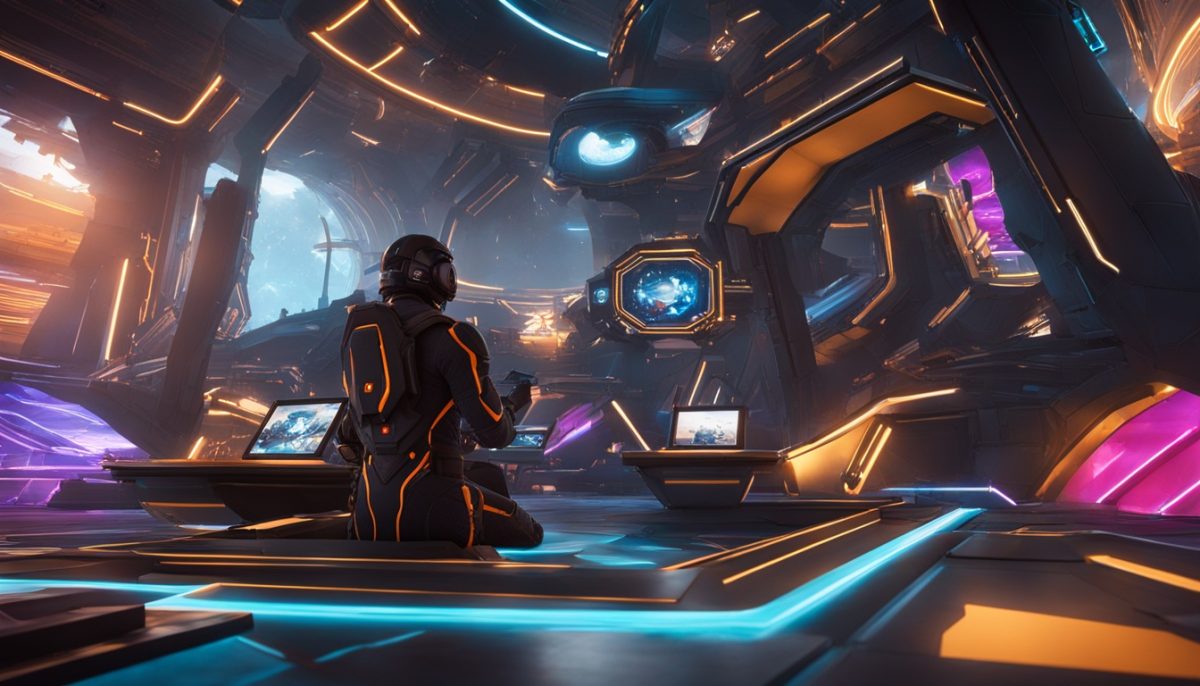
| Technical Skills | Description |
|---|---|
| Programming | Ability to write code and develop gameplay mechanics, interactions, and behaviors. |
| Computer Graphics | Proficiency in creating and manipulating visual elements such as characters, environments, and special effects. |
| Game Engines | Familiarity with game development tools that provide the framework for building and optimizing games. |
With a strong foundation in these technical skills, game design experts can push the boundaries of creativity and innovation, creating captivating video games that resonate with players of all ages and interests.
Creative Skills in Game Design
In the world of game design, creative skills are like the paintbrushes and color palette that allow game designers to bring their visions to life. These skills are the heart and soul of game development, enabling designers to craft immersive and captivating gaming experiences.
Storytelling plays a crucial role in game design. It allows designers to create narratives that engage players emotionally and intellectually. By constructing compelling storylines, characters, and worlds, game designers can transport players into a rich and immersive gaming universe.
The artistic and design abilities of game designers are also fundamental in shaping the visual aesthetics of a game. From concept art and character design to environmental landscapes and user interfaces, these skills contribute to the overall look and feel of the game. Attention to detail and a keen eye for aesthetics ensure that every element of the game is visually appealing and harmonious.
Another creative skill that enhances player engagement is sound design. Innovative and immersive sound effects, background music, and voice acting bring games to life and add depth to the gaming experience. By utilizing sound design techniques, game designers can create an audio landscape that complements the visual elements and enhances the overall atmosphere.
It is the combination of these creative skills that allows game design experts to create unique and unforgettable gaming experiences. The artistry of storytelling, art and design, and sound design converge to transport players into extraordinary worlds where their imagination can thrive.
“Creativity is allowing yourself to make mistakes. Art is knowing which ones to keep.” – Scott Adams
The Impact of Creative Skills on Player Engagement
Creative skills are not merely decorative elements in game design; they have a significant impact on player engagement. When a game is well-crafted with compelling storytelling, visually stunning art and design, and immersive sound design, players are drawn into the game’s world and feel a deeper connection to the gameplay.
Storytelling, for example, allows players to become emotionally invested in the game’s characters and narratives. It adds depth to the overall gaming experience and creates a sense of purpose for players as they progress through the game. A well-executed storyline can keep players engaged for hours on end, eager to uncover the next plot twist or character development.
Art and design in games have the power to transport players to new and exciting worlds. Stunning visuals captivate players’ attention and make the gaming experience more memorable. When the artistic and design elements align with the game’s narrative and mechanics, players become fully immersed in the game’s universe and feel a sense of awe and wonder.
Sound design, on the other hand, adds another layer of immersion to the gaming experience. By utilizing sound effects, music, and voice acting strategically, game designers can evoke specific emotions and enhance the atmosphere of the game. Whether it’s the adrenaline-pumping soundtrack during intense action sequences or the tranquil background music in a serene environment, sound design helps create a more immersive and engaging gameplay experience.
| Creative Skill | Impact on Player Engagement |
|---|---|
| Storytelling | Creates emotional investment, adds depth and purpose to gameplay experience. |
| Art and Design | Transports players to new worlds, enhances visual appeal, creates a sense of awe and wonder. |
| Sound Design | Enhances immersion, evokes emotions, adds depth to the atmosphere of the game. |
Collaboration and Communication Skills in Game Design
In the world of game design, collaboration and communication skills are essential for bringing creative visions to life. Game design experts rely on these skills to effectively work with teams, communicate ideas, manage projects, and coordinate with various stakeholders throughout the game development process. The ability to collaborate and communicate effectively helps ensure that the final product meets the desired goals and delivers an outstanding gaming experience.
Successful game design often requires teamwork, where individuals with diverse expertise come together to contribute their unique skills and perspectives. Collaboration skills enable game designers to work seamlessly with programmers, artists, sound designers, and other professionals involved in the game development process. By fostering a collaborative environment, game design teams can harness the collective creativity and expertise of their members, resulting in innovative and captivating gameplay experiences.
Communication skills play a vital role in game design by facilitating the sharing of ideas, concepts, and feedback. Game designers must be able to articulate their vision, concepts, and design choices effectively to ensure that their team members understand and are aligned with the creative direction. Additionally, strong communication skills enable game designers to integrate feedback from stakeholders, such as clients, playtesters, and publishers, and make necessary adjustments to enhance the game’s quality and appeal.
Project management is another crucial aspect of game design that relies heavily on collaboration and communication skills. Game designers need to oversee the entire development process, ensuring that tasks are assigned, deadlines are met, and progress is tracked. Effective project management involves coordinating resources, managing potential conflicts, and adapting to changing circumstances, all of which require strong collaboration and communication skills.
“Collaboration and effective communication are at the core of every successful game design project. By fostering a collaborative environment and leveraging strong communication skills, game design teams can bring their creative visions to life and deliver exceptional gaming experiences.” – Jane Williams, Game Designer
Overall, collaboration and communication skills are integral to the success of game design. Game design experts who possess these skills can work seamlessly with others, effectively share ideas and concepts, manage projects efficiently, and adapt to the demands of the ever-evolving gaming industry. The ability to collaborate and communicate effectively ultimately translates into delivering engaging and immersive video games that captivate players worldwide.
Key Points:
- Collaboration and communication skills are essential in game design for effective teamwork and coordination.
- The ability to collaborate fosters collective creativity and results in innovative and captivating gameplay.
- Strong communication skills facilitate idea sharing, feedback integration, and alignment with creative direction.
- Effective project management relies on collaboration and communication skills to ensure smooth development processes.
Examples of Collaboration and Communication Skills in Game Design
| Collaboration Skills | Communication Skills |
|---|---|
| Teamwork and cooperation | Effective verbal and written communication |
| Problem-solving and critical thinking in a team setting | Active listening and understanding feedback |
| Flexibility and adaptability in team dynamics | Clear and concise expression of ideas and concepts |
| Conflict resolution and negotiation | Collaborative decision-making |
| Leadership and delegation | Managing expectations and providing constructive feedback |

Analytical and Problem-Solving Skills in Game Design
Game design is a complex and creative process that requires a diverse set of skills. Among these essential skills, analytical skills and problem-solving skills play a crucial role. Game design experts leverage their analytical mindset and problem-solving abilities to design compelling game mechanics and create challenging levels that engage players.
When it comes to game mechanics, analytical skills are instrumental in crafting well-balanced and enjoyable gameplay experiences. Game designers analyze the core mechanics of a game, such as movement, combat, and puzzle-solving, to ensure they align with the overall design vision. This analytical process involves considering player feedback, conducting playtesting sessions, and iterating on the mechanics to enhance player engagement.
Furthermore, problem-solving skills are paramount in level design. Game designers face the challenge of creating levels that provide a gradual learning curve while offering enough complexity to keep players immersed. They must identify potential bottlenecks, anticipate player behavior, and find innovative solutions to create a seamless and rewarding progression. Problem-solving skills enable designers to think critically and devise creative level designs that maximize player enjoyment.
Game design is an iterative process where analytical and problem-solving skills continuously come into play. Designers analyze player data and feedback to identify areas for improvement, whether that’s modifying game mechanics or refining level design. They leverage their problem-solving abilities to address issues and enhance the overall gaming experience.
By combining analytical skills with problem-solving skills, game designers create games that engage players and ignite their imagination. These skills are the foundation of successful game design and serve as a catalyst for innovation in the gaming industry.
Adaptability and Continuous Learning in Game Design
Game design is an ever-evolving field that constantly keeps game design experts on their toes. The industry trends and emerging technologies are constantly reshaping the landscape of game development, making adaptability and continuous learning crucial for success.
By staying updated with the latest industry trends, game design experts can anticipate player preferences, understand market demands, and create games that resonate with their target audience. This adaptability allows them to stay ahead of the curve and deliver innovative gaming experiences.
Furthermore, embracing emerging technologies is paramount for game design professionals. New advancements in virtual reality, augmented reality, and artificial intelligence are revolutionizing the way games are created and experienced. By constantly expanding their skillset and exploring these emerging technologies, game designers can push the boundaries of what is possible and create immersive and transformative experiences for players.

